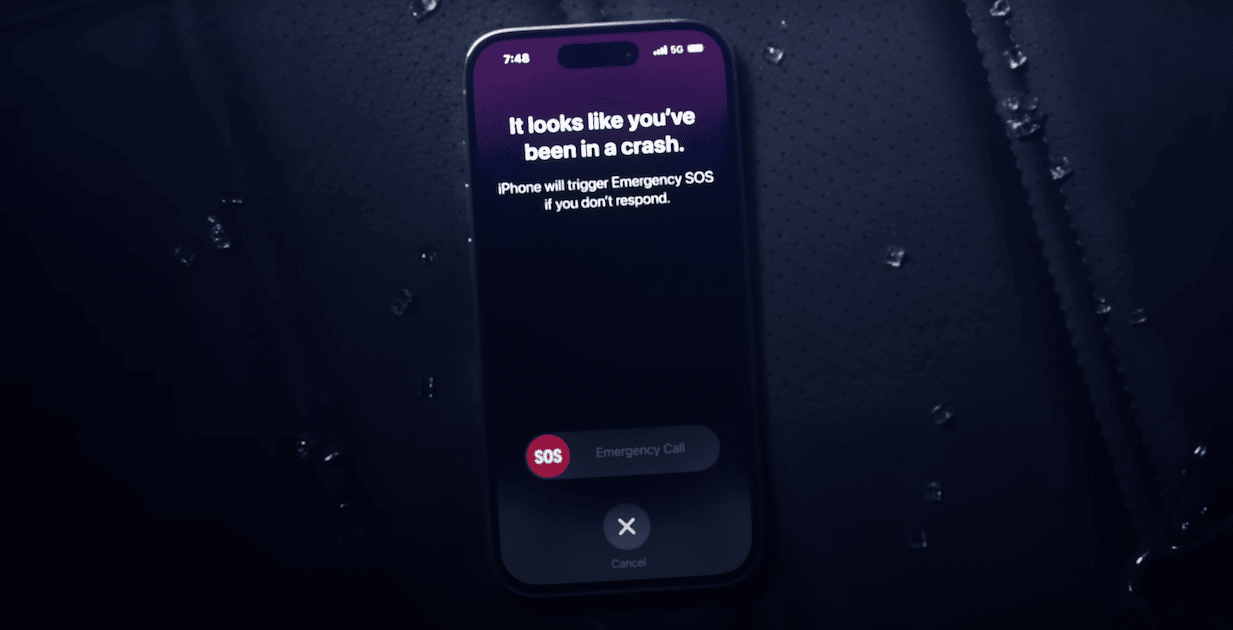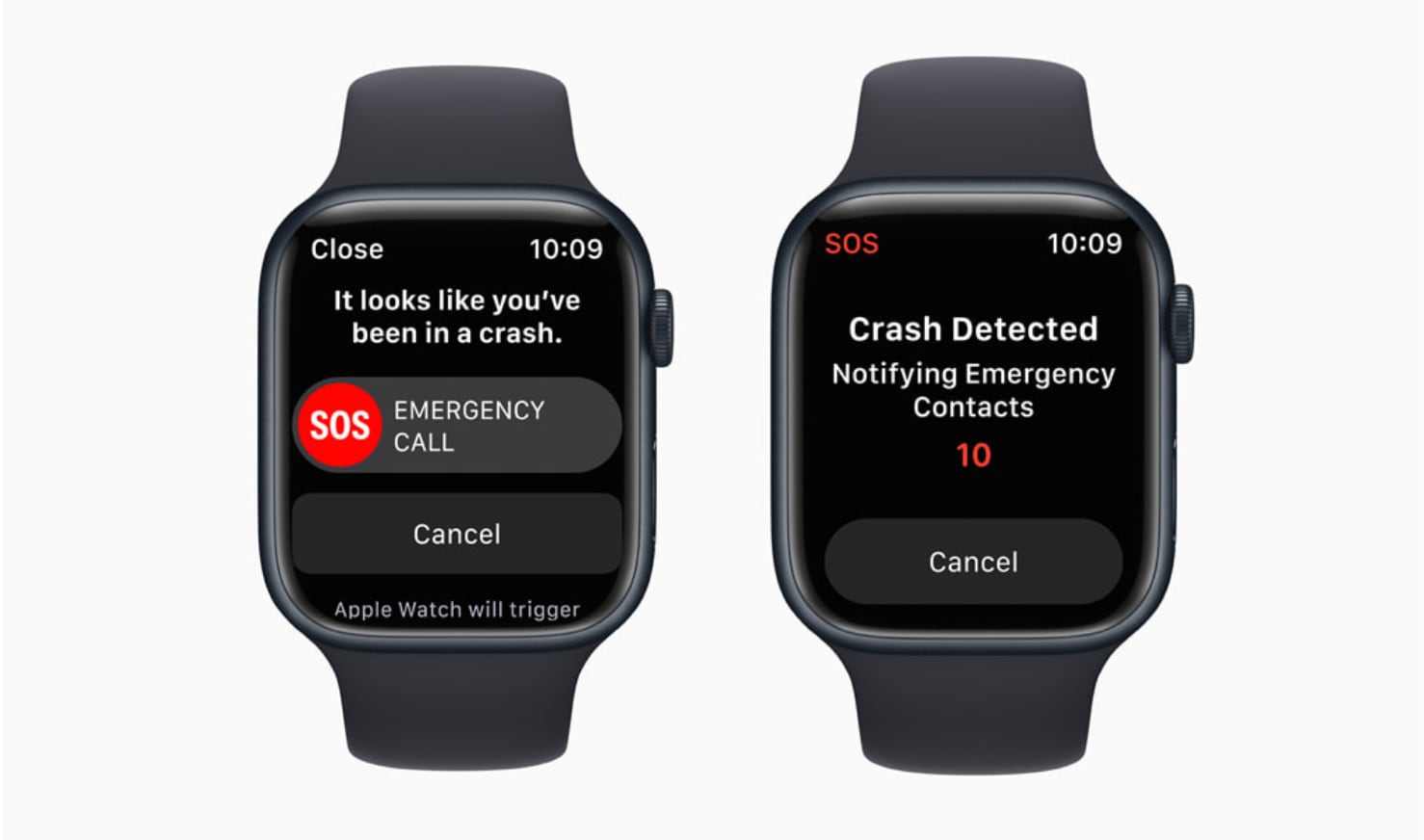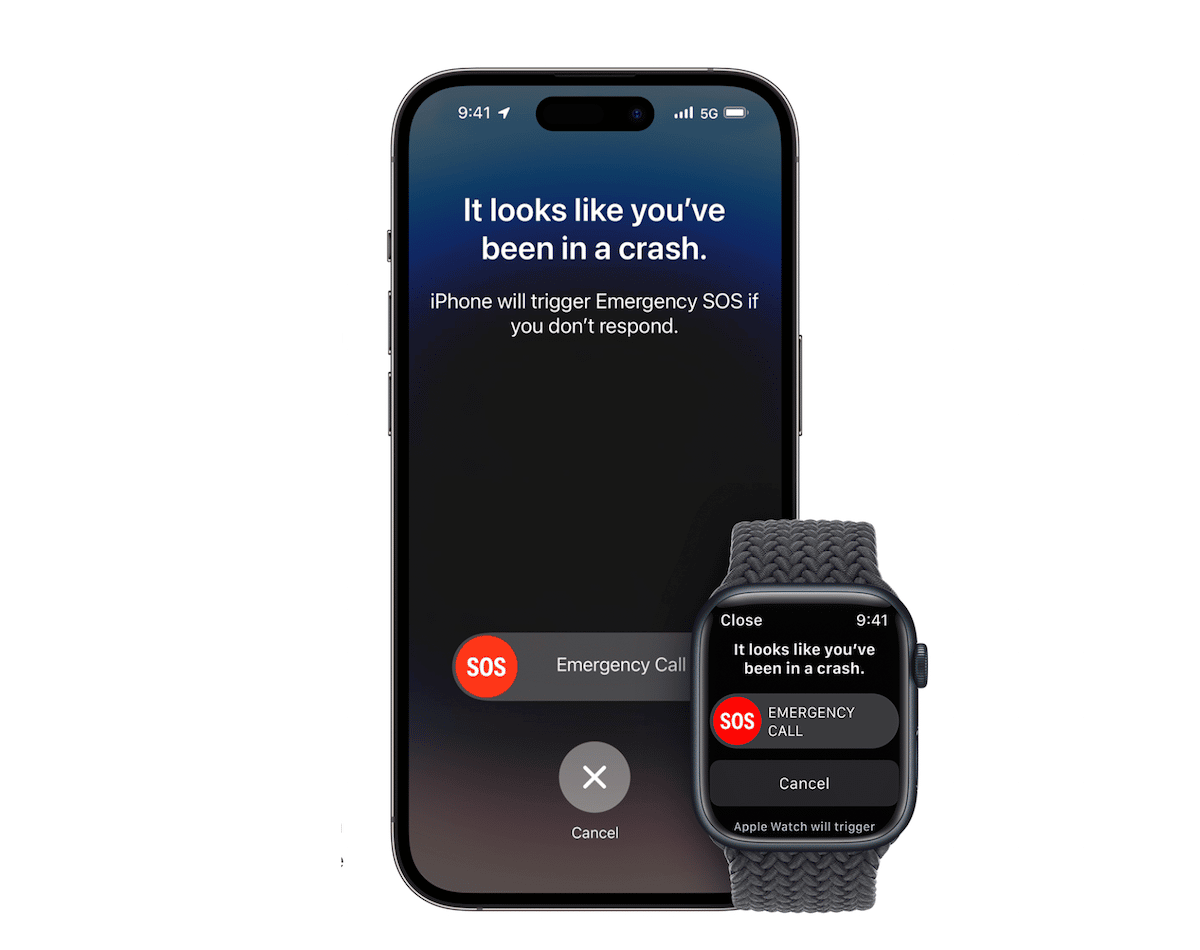Apple’s new iPhone 14 and iPhone 14 Pro models as well as the Apple Series Series 8, Ultra, and SE 2 offer Crash Detection. When these devices detect a crash or collision, they automatically place an emergency call. In a new interview, two Apple executives went into detail about how Crash Detection works.

Here’s how Crash Detection works, as detailed by Apple executives
In a new interview with TechCrunch’s Brian Heater, Apple’s vice president of Sensing & Connectivity, Ron Huang, and vice president of Worldwide iPhone Product Marketing, Kaiann Drance, dived into the details of how Crash Detection actually works.
The feature largely relies on the new gyroscope and accelerometer in conjunction with new motion sensors for added reliability.
“It’s mostly the G Force detection,” said Drance. “It’s able to detect G Force up to 256 Gs. That was one of the key differences for the new accelerometers that the new watches and phones have.”
Huang added, “It started off with our fundamental understanding of what is experienced during a crash. In these crashes, you see impact forces over 100 (Gs). We started around 256. Any time you try to increase that range, there are trade-offs, in terms of precision at the higher range and the power costs. It took the team a lot of work to build the sensors in this way.”
Along with the hardware, Crash Detection also uses other sensor pieces such as the GPS to determine what speed the user is traveling at, the microphone to monitor the sounds of a crash as well as the barometer, which identifies the change in pressure that occurs when airbags are deployed.
“There’s no silver bullet, in terms of activating crash detection,” says Huang. “It’s hard to say how many of these things have to trigger, because it’s not a straight equation. Depending how fast the traveling speed was earlier, determines what signals we have to see later on, as well. Your speed change, combined with the impact force, combined with the pressure change, combined with the sound level, it’s all a pretty dynamic algorithm.”

There are some situations in which Crash Detection will not contact emergency services such as fender bends.
“I actually had a rear-end fender bender when I was in New York earlier,” said Drance. “My crash detection did not go off, because it’s just one of those minor things where you just get out of your car and keep going. That’s part of the sensor fusion and accuracy, because we don’t want to be doing a lot of false calls to 9-1-1 when they’re not necessary.”
Unfortunately, there have been some recent reports about roller coaster rides incorrectly triggering Crash Detection by the Joker roller coaster at Six Flags Great America near Chicago. This led to emergency services being called to the location.

The interview also touched on how Apple gathered the necessary data to create Crash Detection. As per Huang, real-world resting was required to ensure that the feature would not accidentally get triggered when it is not intended, so emergency services cannot be called when they are not required.
“We put iPhones in many different places throughout the car — on the dummies and the car itself and mounts and so forth,” says Huang. “And then we collect all of the raw sensor data coming from these devices during such a crash. We put cameras inside and outside the cars, as well, so from the footage, you can time the actual impact, what the pressure sensors see when the airbag goes off in slow motion. We’re able to look at data in high fidelity. We also look at DATA from the Department of Transportation or the NHTSA (National Highway Traffic Safety Administration) to understand what kinds of crashes are the leading causes of injuries.”
Huang also revealed that if a crash is detected and an iPhone attempts to contact emergency services but cannot due to a lack of signals, Apple will try to connect the call via satellite through the emergency SOS capability.